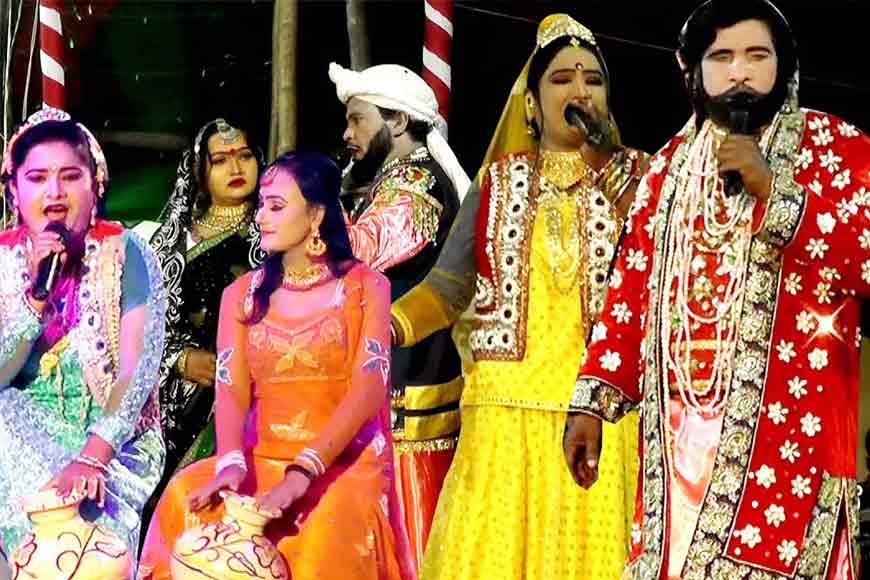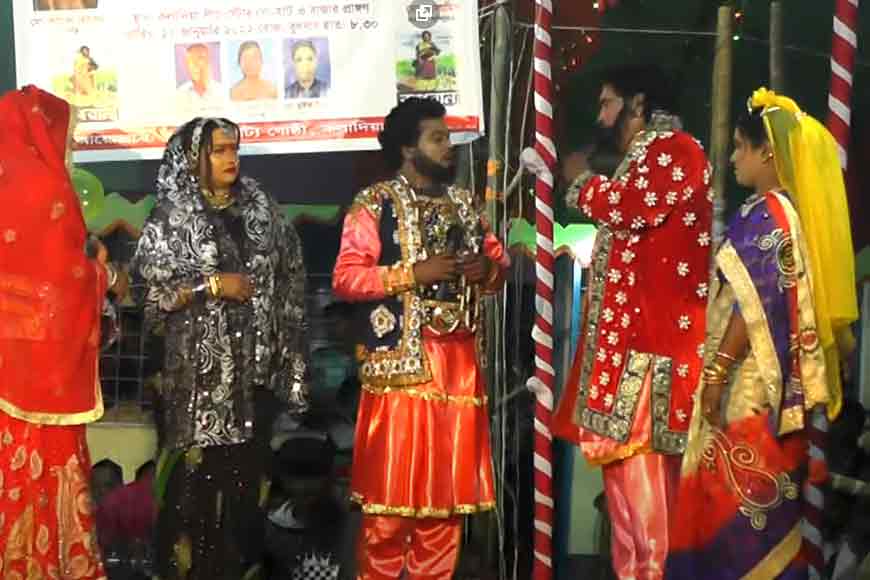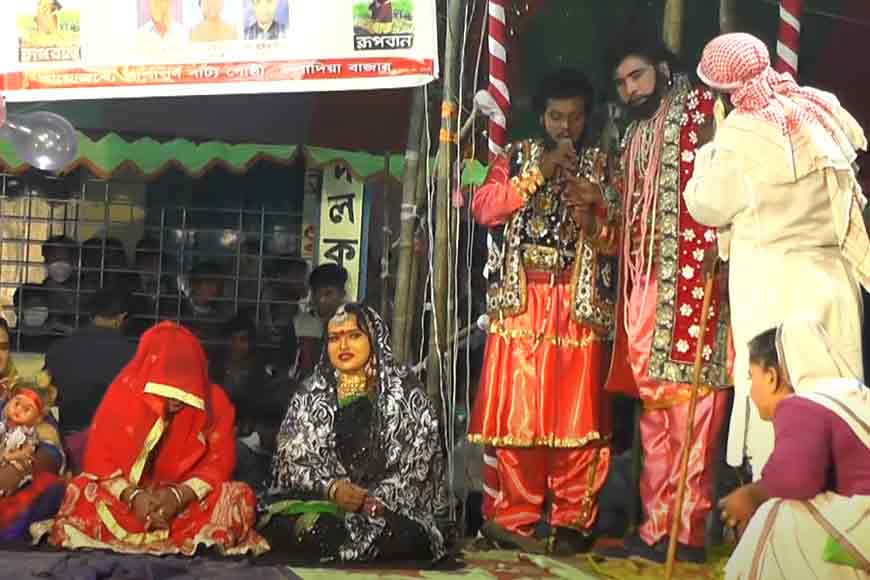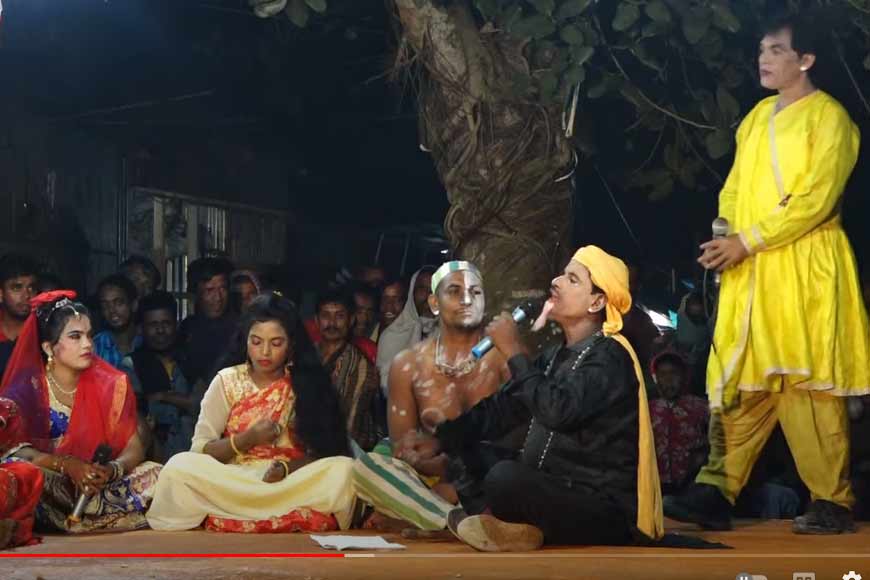Rupban Jatra Pala – a dying art form of Bengal set to revive - GetBengal story

Jatra pala, a well-known genre of traditional folk theatre
For ages, humans have depended on art forms to express themselves. Creating visual art as well as expressive art is one of the defining characteristics of the human species. Art, in its many forms, is practised by almost all human cultures. In all societies today, the visual arts are intimately intertwined with music, dance, ritual and language. With the evolution of human cognition, these art forms were deployed in new ways and they became intertwined with complex symbolic meanings. These art forms have been a part of our lives for ages and they help in reiterating stories of our daily lives.

One such art form is the Jatra pala of Bengal. Different from the theatre or plays on stage, Jatra is considered a famous form of traditional folk theatre from the eastern region of India. It literally means a ‘journey’ and hence, stylized delivery and exaggerated gestures and orations are some of the features of Jatra. It is believed to have originated from ceremonial functions that are arranged before starting on a journey, whereas other legends say that it developed from processions brought out in respect of different gods and goddesses. Jatra is an art form that often includes other creative expressions such as music and dance as its primary part.
Also read : Jugi Jatra: The fading folk theatre of Midnapore
This folk drama combines acting, songs, music and dance to give form to a story. It is performed by a troupe that is travelling from one place to another. In the early ages, the religious and cultural values were well communicated with the help of Jatra to the masses. As historian Prakash Samui of Burdwan says: “The birthplace of jatra is believed to be in the religious landscapes as a part of the Bhakti movement but it was replaced by morally educative contents by the end of the 19th century. As a result, during the Bengal Renaissance, it gained significance in urban theatres as well. Various Hindu epics like Mahabharata and Ramayana were performed.” Later, jatras were held beside palas which is why many call it “jatra pala”. The themes are mostly derived from Hindu mythology and recount stories about Rama, Shiva or Kali. Historical romances and love stories were also adapted for the jatra stage.

Usually, such performances last for about four hours. It consists of dialogue and songs, which form a very important element of the whole. Singing is rather complex since the music combines classical ragas, semi-classical melodies and folk tunes; the last is often related to minor characters in the play. Jatra is often performed outdoors on a square platform from which a gangway leads through the audience to the dressing room. The gangway also serves as an acting area when needed. The stage is usually empty. One chair may serve several purposes; it may be a throne, a mountain, a chariot etc. The few props needed are brought and taken away by stage assistants. Jatra has gone through several changes during its history. Men originally played the female roles too, but now mixed casts are popular. Due to the influence of movies the acting style aims at realism. The actors may come from different castes and professions. Many popular jatra actors have become wealthy stars.
Unfortunately, this form of art is fast disappearing owing to the increase in movies and OTT platforms. The Rupban Pala which was once very famous with the people is an endangered form of art now. Recently, in Murshidabad, the Rupban pala was arranged in an effort to revive the age-old art form. Such Rupban palas were once upon a time a big hit in gram bangla or villages of Bengal. The lost art form was brought back by the artists who performed on stage with the music of flute and harmonium and dance. A meeting was held to discuss how such artforms like jatras and Rupban Palas can be revived and how they can be spread across the state once again. Actors of Jatra cannot dedicate their whole talent to just the stage in need of earning. Like Rupkumar Maity, a jatra actor whose father used to be part of the Rupban Palas in Bahrampur said: “We have to do other work to earn a livelihood, as Jatra doesn’t give us much money to raise our families. Yet it is a passion and hence after our farm work or some who work as local labourers, we try and find time to practice and enact plays like Kajolrekha, Rupban, bimata, sagarbhasha, Behula Sundari and others. We want to keep our culture alive.”

The present generation is lacking interest in such plays and do not want to participate in the jatras or palas. The books have been preserved by the jatra teams so that they can enact the plays and never forget their roots. They are performing the plays on stage so that the present generation takes an interest in them and participate in such disappearing traditions. “Phones have attracted the attention of such youths who do not want to watch or participate in the jatras or palas as they are more interested in the movies and series which are readily available online or on different platforms,” lamented the artists. As there are ‘no takers for these art forms,’ artists who were linked with palas and jatras for many years, do not get called for such plays anymore. The government is trying to revive the art form by asking the artists to perform during different occasions so that people can once again take an interest in these precious artforms.










